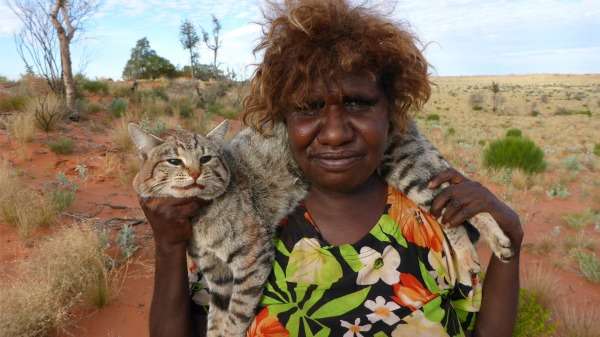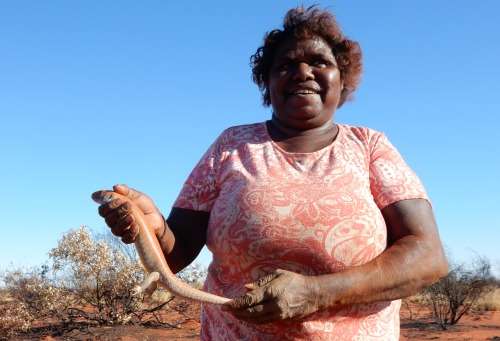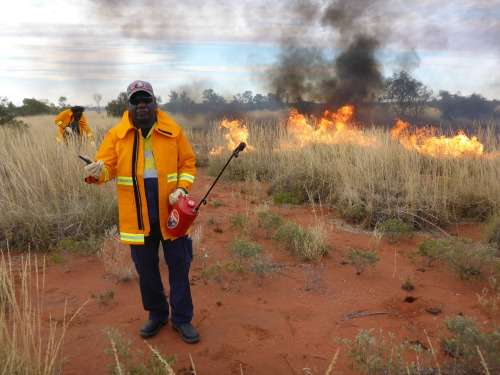Desert cat hunters cut wildlife protection costs

WA nature lovers daunted by the cost of electric exclusion fencing and other methods of protecting threatened species from predators may be interested to know of another, perhaps cheaper, method of combating pests practised by desert Aborigines.
The Pintupi people of the Gibson Desert have been hunting feral cats for food since the pests first appeared about 100 years ago.
A large part of their traditional land is now an Indigenous Protected Area (IPA), which is similar to a national park under Aboriginal control with an Indigenous Ranger team consisting of local men.
A recent Rangelands NRM grant will help the Indigenous Rangers to expand their cat hunting activities further afield which will provide food and has the added benefit of protecting these threatened species from the predators.
Their daily hunting grounds, which are within a 20km radius of the Kiwirrkurra community which the Pintupi people have occupied almost continuously, means three threatened vertebrates are thriving within the region.
The threatened species are the greater bilby (Macrotis lagotis), known as Ninu in Pintupi, the southern marsupial mole (Notoryctes typhlops) or Kakarratulpa, and the great desert skink (Liopholis kintorei) or Tjalapa.
Desert Wildlife Services ecologist Rachel Paltridge says people now settled in this community continue to practise mosaic bush burning to maintain pastures and flush out game, particularly smaller mammals and larger reptiles.
The Rangelands grant will also support the rangers to continue surveying the threatened species, and to extend bush burning to mimic traditional cultural practices.

As part of a recent Bush Blitz survey which documented flora and fauna on the IPA Dr Paltridge and other scientists utilised the ranger's traditional knowledge to track down certain fauna.
"We were using standard trapping methods to survey mainly reptiles and small mammals and we recorded 47 species of reptile and seven species of small mammals," she says.
"Most of those we got by conventional trapping techniques but the threatened species like the bilby, marsupial mole and great desert skink were all found due to the tracking skills of the Kiwirrkurra people.

Dr Paltridge says Pintupi people tracked the bilbies to their burrows, where her team set up remote cameras and photographed the bilbies.
"They took us to the area with skinks and dug up some great desert skinks for us," she says.
"They found tracks of a marsupial mole that had recently come to the surface on the edge of Lake McKay."
Provided by Science Network WA
This article first appeared on ScienceNetwork Western Australia a science news website based at Scitech.

















